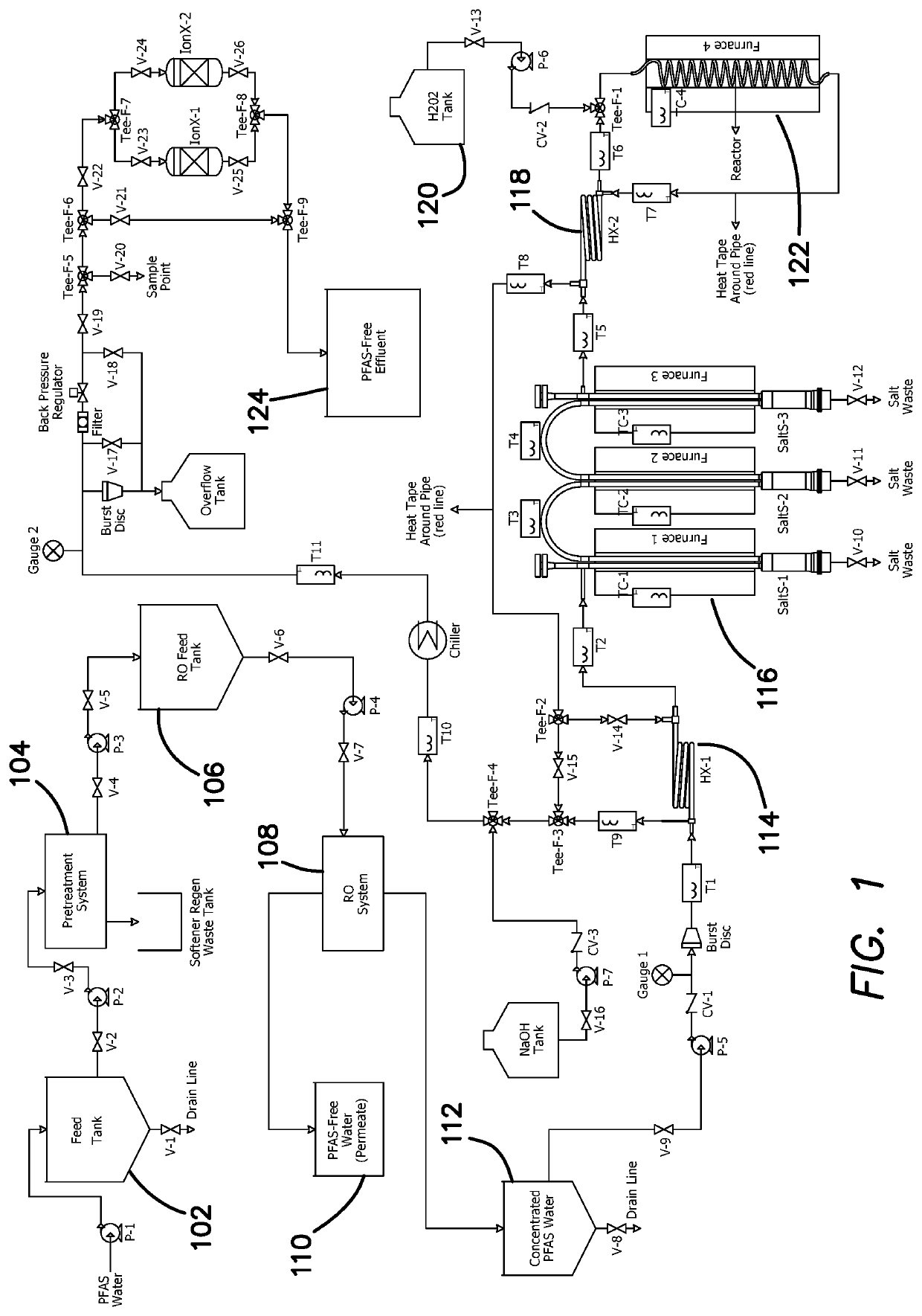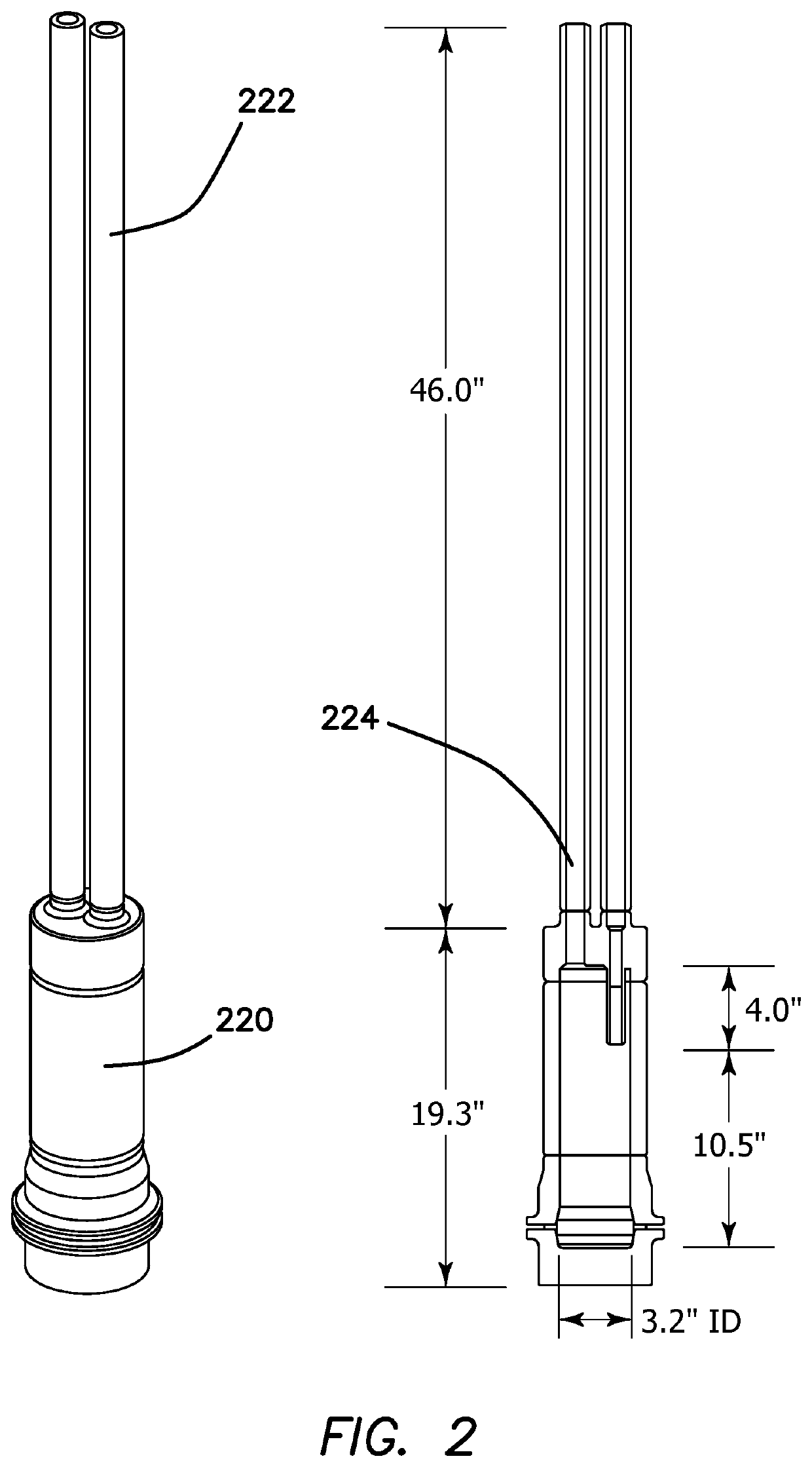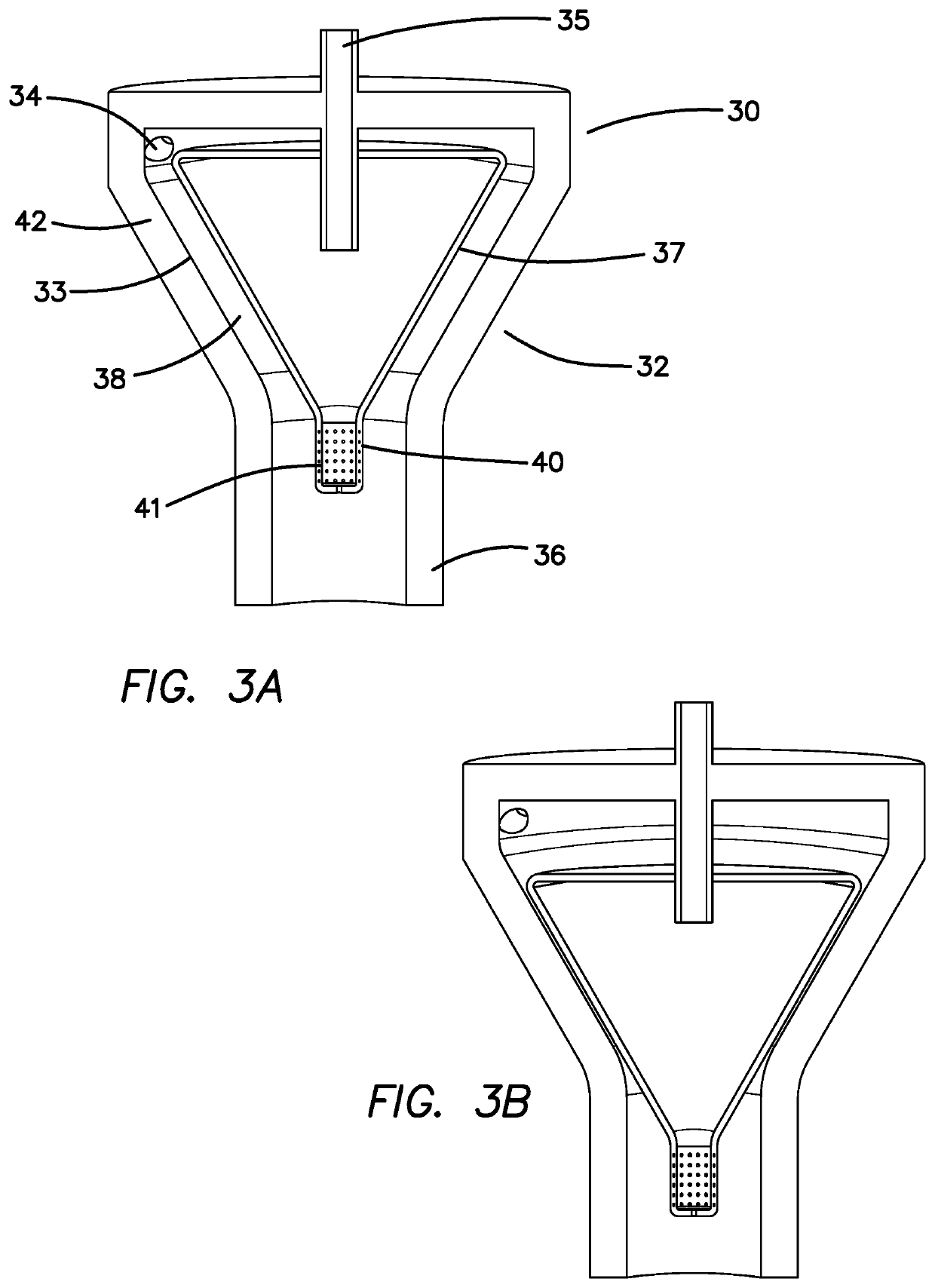Salt separation and destruction of PFAS utilizing reverse osmosis and salt separation
a technology of reverse osmosis and salt separation, applied in the nature of treatment water, multi-stage water/sewage treatment, membranes, etc., can solve the problems of legacy contamination, known human health risks, and introduction of replacement pfas compounds
- Summary
- Abstract
- Description
- Claims
- Application Information
AI Technical Summary
Benefits of technology
Problems solved by technology
Method used
Image
Examples
example
[0067]Reverse Osmosis—364 kg of well water was spiked with PFAS to a concentration of 2400 ug / L. The spiked sample was passed through a water softener (measured PFAS concentration showed no change in the water softening step). The softened PFAS water was run through a Reverse Osmosis system for 160 minutes until the retentate mass was 38.5 kg. The results, where % efficiency=(Cfeed−Cperm / Cfeed)×100, is shown in the Table below:
[0068]
RO Feed Concentrate - Permeate - % AnalytesTankEnd of RunEnd of RunEfficiencyTOTAL PEAS2,383.8814,416.5822.8699.0%PFBA256.991,535.071.4099.5%PFPeA221.031,574.071.3999.4%PFHxA238.421,526.351.7199.3%PFHpA211.281,425.791.9799.1%PFOA502.523,239.445.7098.9%PFDA209.101,232.773.1398.5%PFUnA235.041,212.242.6998.9%PFDoA165.07783.552.7598.3%PFTrDA0.221.66ND100.0%PFTeDA0.181.43ND100.0%PFHxS0.030.49ND100.0%PFHpS1.475.10ND100.0%PFOS236.631,439.951.1299.5%PENS0.420.61ND100.0%4:2FTS0.371.17ND100.0%6:2FTS103.94431.450.7599.3%8:2FTS0.531.84ND100.0%
[0069]The testing showe...
PUM
| Property | Measurement | Unit |
|---|---|---|
| temperatures | aaaaa | aaaaa |
| residence time | aaaaa | aaaaa |
| residence time | aaaaa | aaaaa |
Abstract
Description
Claims
Application Information
 Login to View More
Login to View More - R&D
- Intellectual Property
- Life Sciences
- Materials
- Tech Scout
- Unparalleled Data Quality
- Higher Quality Content
- 60% Fewer Hallucinations
Browse by: Latest US Patents, China's latest patents, Technical Efficacy Thesaurus, Application Domain, Technology Topic, Popular Technical Reports.
© 2025 PatSnap. All rights reserved.Legal|Privacy policy|Modern Slavery Act Transparency Statement|Sitemap|About US| Contact US: help@patsnap.com



